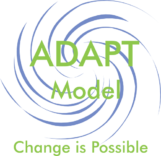All Agile, DevOps and Digital practitioners and organizations undertaking any of these transformations should consider it a requirement to not only read the Business Agility Manifesto and sidebar readings, but to also to correlate how they should mesh together with Agile, DevOps and Digital. Many will ask why they need to understand the perspectives taught in the Business Agility Manifesto. The reason is simple, all too many practitioners and organizations are undertaking Agile, DevOps and Digital in a vacuum, unaware that they fall under the umbrella of business agility. The reality of the situation is that business agility should be your end goal and Agile, DevOps and Digital are pieces of the business agility puzzle, not the end goal.
I will not try and fully explain the Business Agility Manifesto, instead I will highlight a few points that explain why it should be your ultimate goal and Agile, DevOps and Digital should fall in line with its teachings.
In the sidebar for IT Professionals it states that “Self-organizing teams and other agile organization schemes alone do not lead to business agility”. The reality is that far too many individuals in the agile community have confused what agile is and what it is not, agile is simply a method of project management, it is not business agility per se. Business Agility takes into consideration many other aspects such as value chains, business knowledge base and business strategy to name a few.
The Business Agility Manifesto writers also point out that “Excellent customer experience encompasses all touch points with customers, not just digital ones”. Far too many organizations have jumped on digital transformations believing that it is the silver bullet to solve all their ills. It can be argued that evolving digitally is probably required to remain competitive, but it is not the only area they have interaction with customers.
The Manifesto also makes the following two points, first, “The true measure of an agile business solution is how much business knowledge is configured into it and how easily that knowledge can be changed or reconfigured” and secondly, “Deployment of business knowledge into business processes and products should be timely, effective, selective, repeatable, pervasive, traceable, and retractable” Lets be honest, how often have you heard any agile practitioners or organizations said to be practicing agile discuss a business knowledge base, not many.
The Business Manifesto Sidebar for IT Project Professionals states that “True business agility depends on sustainable business change – not just sustainable development of software”. I believe this speaks to many in the DevOps movement who have mistakenly developed the view that DevOps is strictly about adopting tooling and once you have done that you are practicing DevOps and thus have developed business agility. This is a false narrative and one that is unfortunately pervasive worldwide. To gain business agility you must make changes organization wide, it doesn’t happen just by installing some tools on the IT/Software Development side.
The ADAPT Model was designed to help walk organizations and practitioners through all of the steps that eventually lead to true business agility. Creating business agility is a complex, multi-faceted process that takes time and can not be accomplished by simply implementing an agile methodology or incorporating some new tooling, though these are parts of the process.
